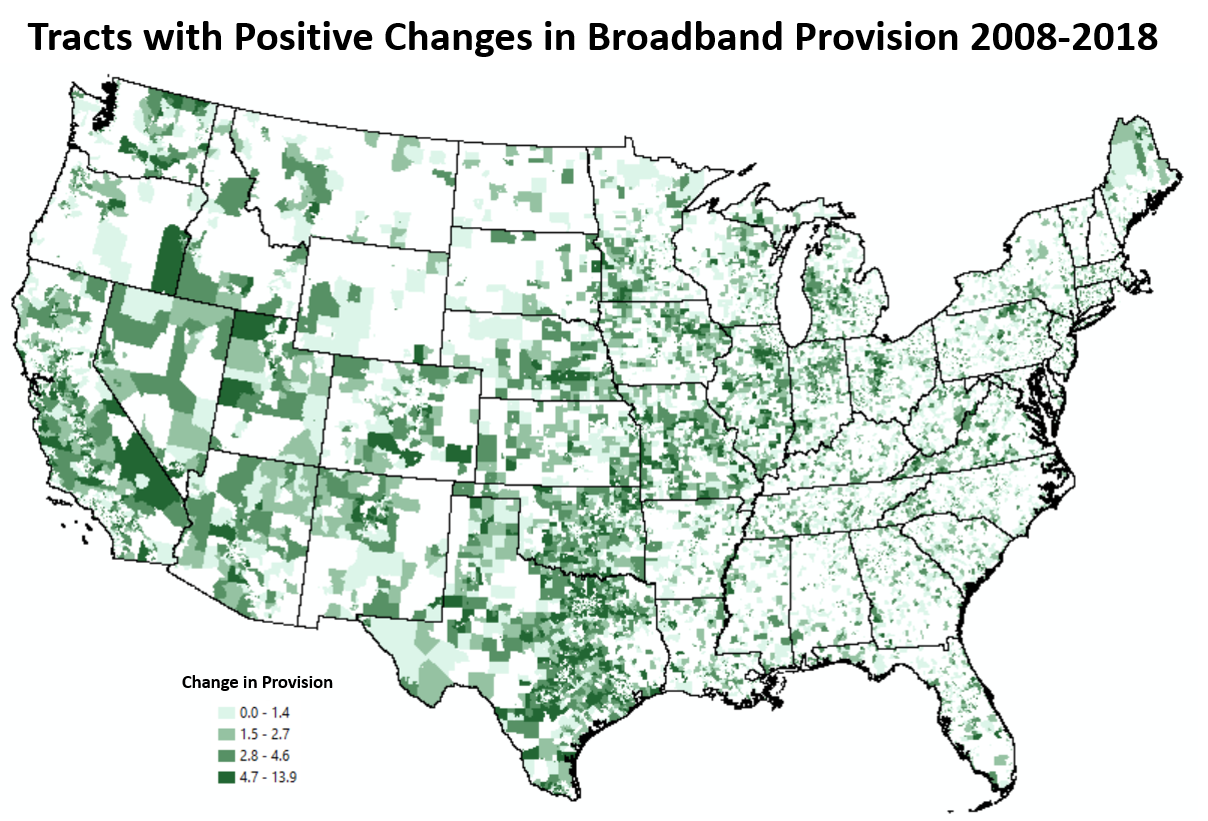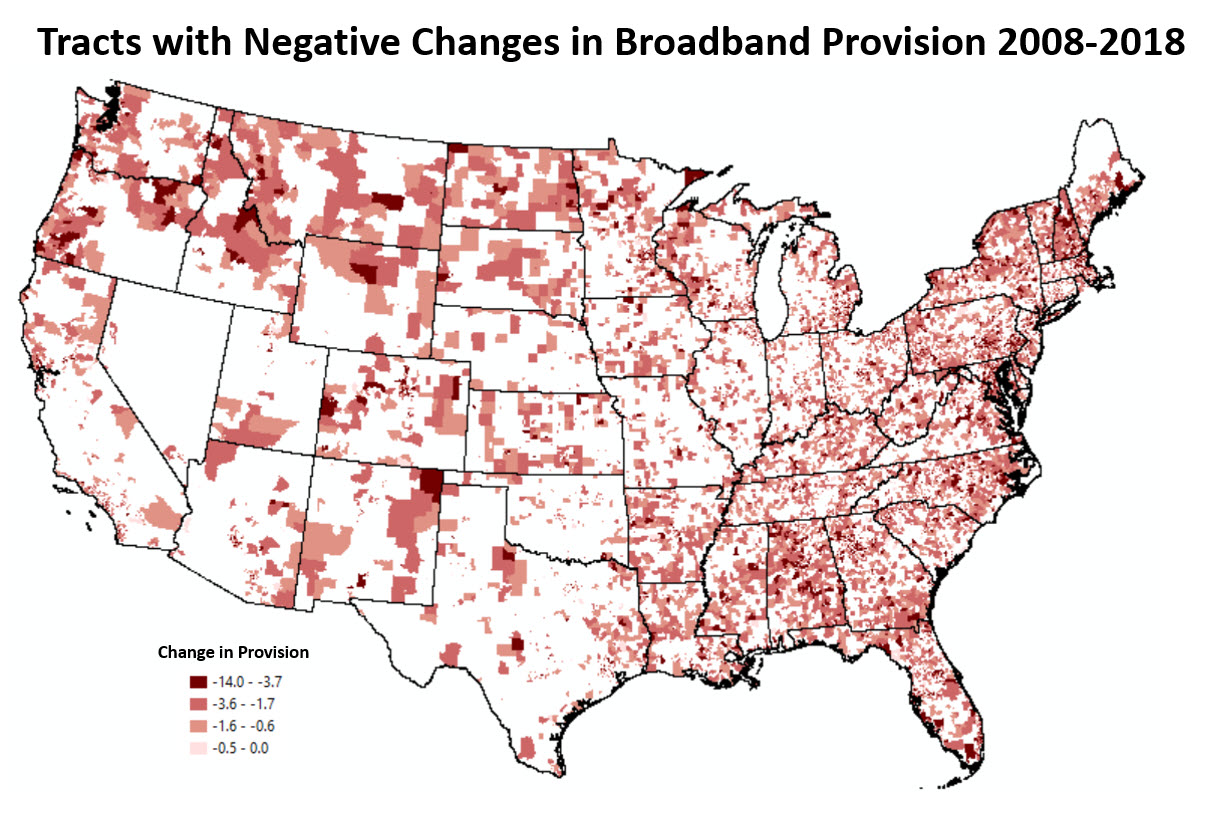MSU Researchers Produce Publicly Available Dataset to Analyze Broadband Availability and Help Close the Digital Divide
May 31, 2021 - Diane Huhn
When millions of Americans were told to go home to work and learn remotely early last year, the COVID-19 pandemic exposed a well-known but ugly reality—the United States is a nation of digital haves and have-nots. But even though an ambitious $100 billion proposal to address this digital divide has been included in the Biden Administration's infrastructure plan currently under debate by Congress, without the work of researchers at Michigan State University, a fundamental flaw in data collection would undoubtedly cause difficulties for determining just where those dollars should best be spent to close the gap.
Initial efforts at the Federal level to understand and address the digital divide got underway in the mid-1990s when Congress passed the Telecommunications Act of 1996. "The primary goal was to foster competition in the industry while simultaneously lowering prices and extending and improving the quality of service for customers throughout the nation," said Elizabeth A. Mack, associate professor in the Department of Geography, Environment, and Spatial Sciences in the College of Social Science at MSU. To evaluate the act's effectiveness, the FCC created a standardized form (Form 477) to collect broadband infrastructure deployment information from service providers. Since that time, twice yearly, these providers must file Form 477 to report information about their broadband connections to end-user locations.
 "To date, Form 477 data remains the best publicly available data source regarding broadband deployment," says Scott Loveridge, professor in the Department of Agricultural, Food, and Resource Economics (AFRE) at MSU. "Unfortunately, there are a lot of nuances to these data which to this point have prevented us from conducting useful analyses over time." To solve this problem, Drs. Mack and Loveridge, along with Dr. John Mann, assistant professor with the Center for Economic Analysis, and several other researchers at the University of Texas and Arizona State University, worked to produce a dataset that resolves some of these issues. "We were able to develop a procedure for using the data to produce an integrated broadband time series," said Dr. Mann. The team has labeled the dataset BITS, which stands for a Broadband Integrated Time Series (BITS).
"To date, Form 477 data remains the best publicly available data source regarding broadband deployment," says Scott Loveridge, professor in the Department of Agricultural, Food, and Resource Economics (AFRE) at MSU. "Unfortunately, there are a lot of nuances to these data which to this point have prevented us from conducting useful analyses over time." To solve this problem, Drs. Mack and Loveridge, along with Dr. John Mann, assistant professor with the Center for Economic Analysis, and several other researchers at the University of Texas and Arizona State University, worked to produce a dataset that resolves some of these issues. "We were able to develop a procedure for using the data to produce an integrated broadband time series," said Dr. Mann. The team has labeled the dataset BITS, which stands for a Broadband Integrated Time Series (BITS).
 Details describing the process for integrating Form 477 broadband data into this robust time-series database can be found in a paper written by the team and recently published in PLOS ONE. The paper also provides a user-friendly version of the data and information about how to access free and publicly available source code on the Harvard Dataverse Repository for use in R and Python, two widely-used open source programming languages optimized for statistical analysis and data visualization.
Details describing the process for integrating Form 477 broadband data into this robust time-series database can be found in a paper written by the team and recently published in PLOS ONE. The paper also provides a user-friendly version of the data and information about how to access free and publicly available source code on the Harvard Dataverse Repository for use in R and Python, two widely-used open source programming languages optimized for statistical analysis and data visualization.
"As more of our day-to-day activities continue to move online, including education, commerce, and healthcare, it's essential that we understand where gaps in digital infrastructure exist. This is especially important if we want to address disparities in access related to demographics, socioeconomic status, and educational attainment," said Mack. "We hope these data will be a tool to diagnosing gaps in availability to help close the digital divide and enhance the participation of all people in online activities."
This work was funded in part by a grant from the United States Department of Agriculture to examine broadband availability and its impact on business in rural and tribal areas. For further details, see "A broadband integrated time series (BITS) for longitudinal analyses of the digital divide."

